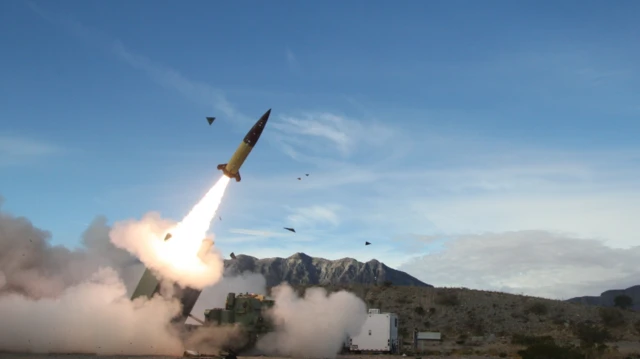September 29, 2025
President Biden has authorized Ukraine to use long-range missiles to target locations inside Russia, marking a significant escalation in the ongoing conflict.

The Biden administration has announced that Ukraine may now use long-range missiles to strike targets inside Russia, a move that signals a significant escalation in the ongoing war in Eastern Europe. According to The Telegraph, the decision comes amid continued Russian attacks on Ukrainian cities and infrastructure, and is intended to bolster Kyiv’s ability to defend its territory and pressure Russian forces.
Previously, Ukraine’s missile capabilities were restricted to shorter-range systems to avoid direct strikes inside Russian territory, reflecting concerns about escalation and international diplomatic sensitivities. However, after consultations with NATO allies and Ukrainian leadership, President Biden authorized the provision of advanced missile systems capable of striking targets deeper inside Russia.
Officials argue that this decision is defensive in nature, aimed at deterring further Russian aggression and allowing Ukraine to target military infrastructure rather than civilian areas. Ukrainian military leaders welcomed the authorization, noting that it enhances their strategic options and strengthens deterrence against Russian forces.
The move is likely to trigger intense debate internationally. While Western allies generally support measures that help Ukraine defend itself, some analysts warn that allowing strikes inside Russia could increase tensions and risk escalation beyond Ukraine’s borders. Diplomatic channels are expected to work overtime to manage the geopolitical implications.
President Biden emphasized that the US remains committed to supporting Ukraine’s sovereignty and territorial integrity while seeking to avoid a broader conflict. White House officials underscored that the long-range missiles are intended strictly for military targets and that Ukraine has agreed to abide by international law and avoid civilian casualties.
The authorization comes amid growing pressure on Kyiv to counter Russian missile and drone attacks, which have targeted energy infrastructure, industrial facilities, and civilian populations. The enhanced missile capabilities provide Ukraine with a strategic advantage, allowing it to strike supply lines, ammunition depots, and command centers located within Russian territory.
Russian officials have already condemned the decision, warning of “serious consequences” for further escalation. Moscow’s response is expected to include heightened military preparedness along the border and possibly increased cyber and information operations targeting Ukrainian and Western interests.
Military experts suggest that while the authorization is primarily symbolic in signaling support for Ukraine, it also has practical implications for battlefield dynamics. Long-range missile strikes could disrupt Russian logistics, reduce pressure on Ukrainian frontlines, and force Moscow to divert resources to defensive operations within its own territory.
Analysts also note the delicate balance Washington faces: providing Ukraine with sufficient military capability without provoking a wider regional war. NATO allies continue to monitor the situation closely, coordinating intelligence and defense measures to mitigate risks.
The move marks one of the most significant US policy decisions regarding the Ukraine conflict since the war began. It highlights the US commitment to strengthening Ukraine’s deterrence capabilities while navigating the complex geopolitical landscape of Eastern Europe.
For Kyiv, the enhanced missile authorization represents both a tactical and psychological boost, signaling strong international backing and reaffirming Ukraine’s right to self-defense. However, it also underscores the high stakes of the conflict, where strategic decisions can have profound consequences for the region and the wider world.